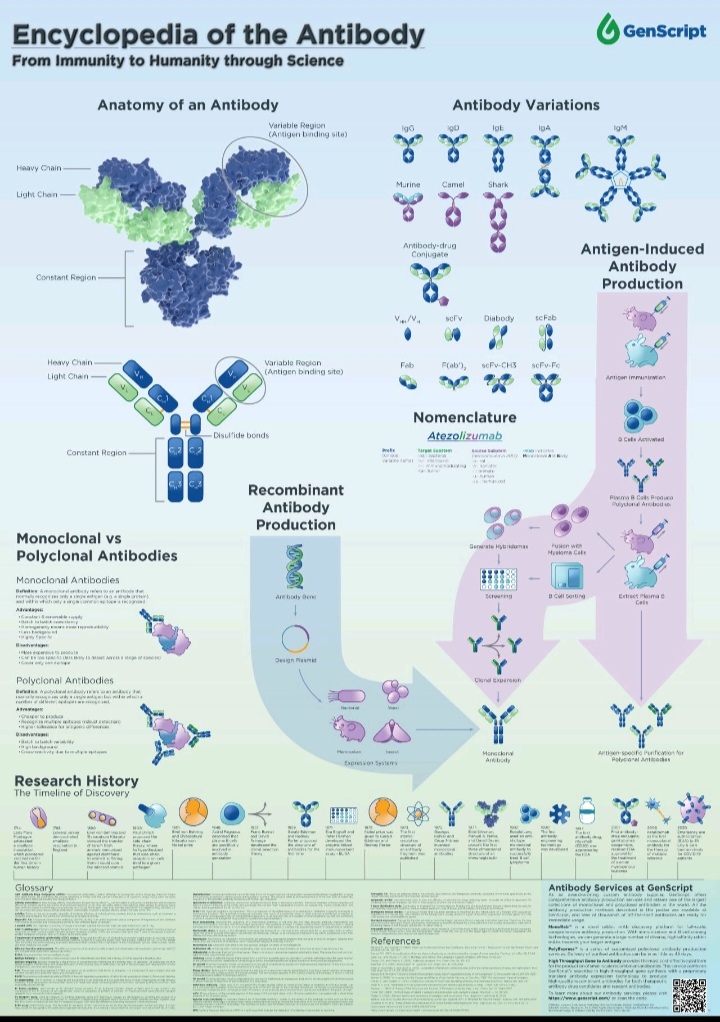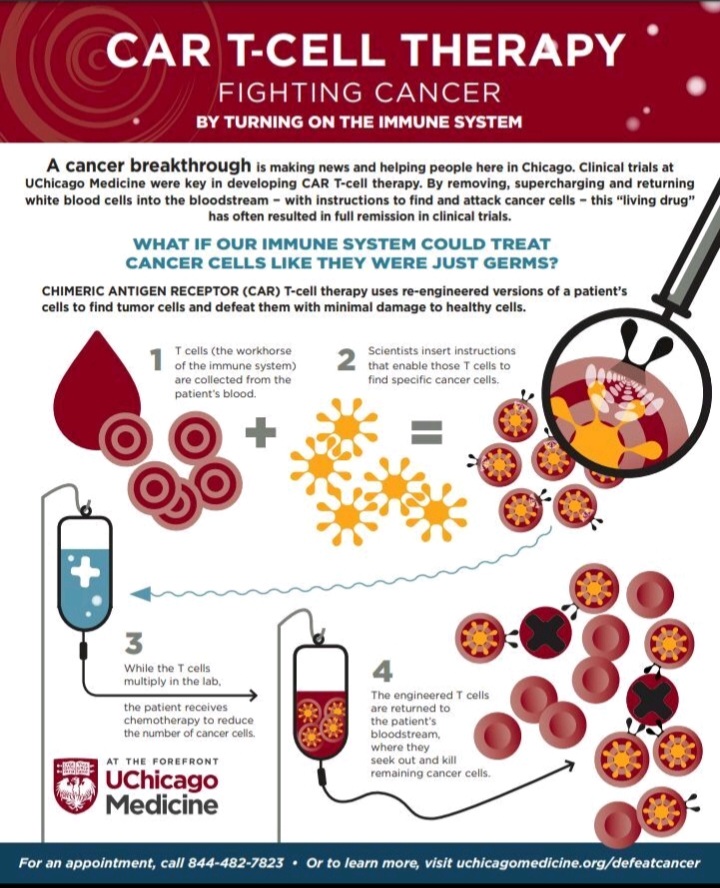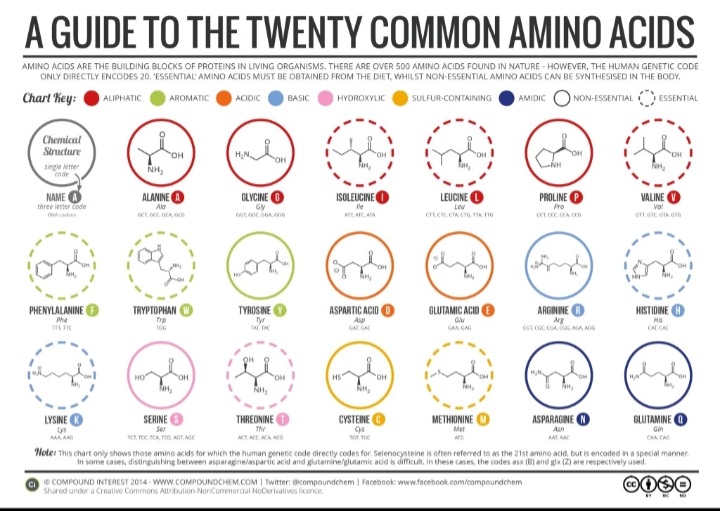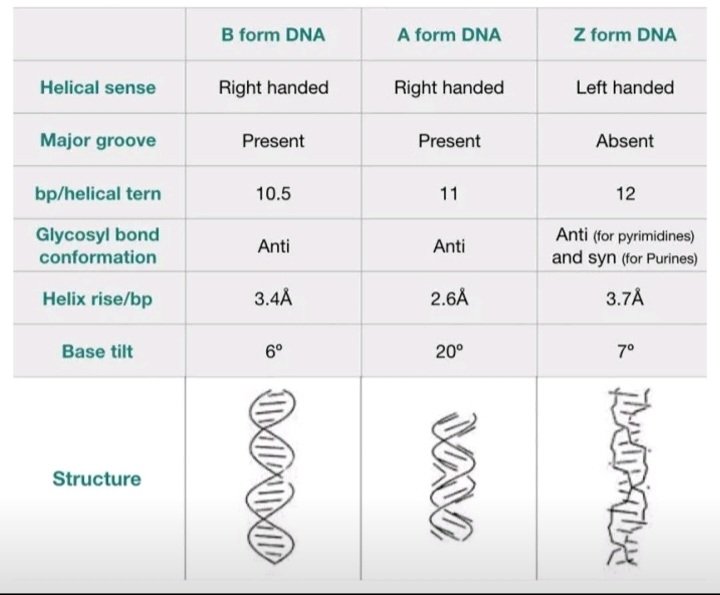Genetic Engineering, alteration of an organism’s genetic, or hereditary, material to eliminate undesirable characteristics or to produce desirable new ones. Genetic engineering is used to increase plant and animal food production; to help dispose of industrial wastes; and to diagnose disease, improve medical treatment, and produce vaccines and other useful drugs. Included in genetic engineering techniques are the selective breeding of plants and animals, hybridization (reproduction between different strains or species), and recombinant deoxyribonucleic acid (DNA).
The first-known genetic engineering technique, still used today, was the selective breeding of plants and animals, usually for increased food production. In selective breeding, only those plants or animals with desirable characteristics are chosen for further breeding. Corn has been selectively bred for increased kernel size and number and for nutritional content for about 7,000 years. More recently, selective breeding of wheat and rice to produce higher yields has helped supply the world’s ever-increasing need for food.
Cattle and pigs were first domesticated about 8,500 to 9,000 years ago and through selective breeding have become main sources of animal food for humans. Dogs and horses have been selectively bred for thousands of years for work and recreational purposes, resulting in more than 150 dog breeds and 100 horse breeds.
Hybridization (crossbreeding) may involve combining different strains of a species (that is, members of the same species with different characteristics) or members of different species in an effort to combine the most desirable characteristics of both. For at least 3,000 years, female horses have been bred with male donkeys to produce mules, and male horses have been bred with female donkeys to produce hinnies, for use as work animals.
In recent decades, genetic engineering has been revolutionized by a technique known as gene splicing, which scientists use to directly alter genetic material to form recombinant DNA. Genes consist of segments of the molecule DNA. In gene splicing, one or more genes of an organism are introduced to a second organism. If the second organism incorporates the new DNA into its own genetic material, recombined DNA results. Specific genes direct an organism’s characteristics through the formation of proteins such as enzymes and hormones. Proteins perform vital functions—for example, enzymes initiate many of the chemical reactions that take place within an organism, and hormones regulate various processes, such as growth, metabolism, and reproduction. The introduction of new genes into an organism essentially alters the characteristics of the organism by changing its protein makeup.
In gene splicing, DNA cannot be transferred directly from its original organism, known as the donor, to the recipient organism, known as the host. Instead, the donor DNA must be cut and pasted, or recombined, into a compatible fragment of DNA from a vector—an organism that can carry the donor DNA into the host. The host organism is often a rapidly multiplying microorganism such as a harmless bacterium, which serves as a factory where the recombined DNA can be duplicated in large quantities. The subsequently produced protein can then be removed from the host and used as a genetically engineered product in humans, other animals, plants, bacteria, or viruses. The donor DNA can be introduced directly into an organism by techniques such as injection through the cell walls of plants or into the fertilized egg of an animal. Plants and animals that develop from a cell into which new DNA has been introduced are called transgenic organisms.
Another technique that produces recombinant DNA is known as cloning. In one cloning method, scientists remove the DNA-containing nucleus from a female’s egg and replace it with a nucleus from an animal of a similar species. The scientists then place the egg in the uterus of a third animal, known as the surrogate mother. The result, first demonstrated by the birth of a cloned sheep named Dolly in 1996, is the birth of an animal that is nearly genetically identical to the animal from which the nucleus was obtained. Such an animal is genetically unrelated to the surrogate mother. Cloning is still in its infancy, but it may pave the way for improved farm animals and medical products.
The use of recombinant DNA has transformed a number of industries, including plant and animal food production, pollution control, and medicine.
Recombinant DNA is used to combat one of the greatest problems in plant food production: the destruction of crops by plant viruses or insect pests. For example, by transferring the protein-coat gene of the zucchini yellow mosaic virus to squash plants that had previously sustained great damage from the virus, scientists were able to create transgenic squash plants with immunity to this virus. Scientists also have developed transgenic potato and strawberry plants that are frost-resistant; potatoes, corn, tobacco, and cotton that resist attacks by certain insect pests; and soybeans, cotton, corn, and oilseed rape (the source of canola oil) that have increased resistance to certain weed-killing chemicals called herbicides. Recombinant DNA has also been used to improve crop yield. Scientists have transferred a gene that controls plant height, known as a dwarfing gene, from a wheat plant to other cereal plants, such as barley, rye, and oats. The transferred gene causes the new plant to produce more grain and a shorter stalk with fewer leaves. The shorter plant also resists damage from wind and rain better than taller varieties.
Scientists also apply gene-splicing techniques to animal food production. Scientists have transferred the growth hormone gene of rainbow trout directly into carp eggs. The resultant transgenic carp produce both carp and rainbow trout growth hormones and grow to be one-third larger than normal carp. Other fish that have been genetically engineered include salmon, which have been modified for faster growth, and trout, which have been altered so that they are more resistant to infection by a blood virus.
Recombinant DNA also has been used to clone large quantities of the gene responsible for the cattle growth hormone bovine somatotropin (BST) in the bacterium Escherichia coli. The hormone is then extracted from the bacterium, purified, and injected into dairy cows, increasing their milk production by 10 to 15 percent.
Genetically altered bacteria can be used to decompose many forms of garbage and to break down petroleum products. Recombinant DNA also can be used to monitor the breakdown of pollutants. For example, naphthalene, an environmental pollutant present in artificially manufactured soils, can be broken down by the bacterium Pseudomonas fluorescens. To monitor this process, scientists transferred a light-producing enzyme called luciferase, found in the bacterium Vibrio fischeri, to the Pseudomonas fluorescens bacterium. The genetically altered Pseudomonas fluorescens bacterium produces light in proportion to the amount of its activity in breaking down the naphthalene, thus providing a way to monitor the efficiency of the process (see Bioremediation).
In 1982 the United States Food and Drug Administration (FDA) approved for the first time the medical use of a recombinant DNA protein, the hormone insulin, which had been cloned in large quantities by inserting the human insulin gene into the genetic makeup of Escherichia coli bacteria. Previously, this hormone, used by insulin-dependent people with diabetes mellitus, had been available only in limited quantities from hogs.
Since 1982 the FDA has approved other genetically engineered proteins for use in humans, including three cloned in hamster cell cultures: tissue plasminogen activator (tPA), an enzyme used to dissolve blood clots in people who have suffered heart attacks; erythropoetin, a hormone used to stimulate the production of red blood cells in people with severe anemia; and antihemophilic human factor VIII, used by people with hemophilia to prevent and control bleeding or to prepare them for surgery. Another important genetically engineered drug is interferon, a chemical that is produced by the body in tiny amounts. Engineered interferon is used to fight viral diseases and as an anticancer drug.
Scientists also have employed recombinant DNA to produce medically useful human proteins in animal milk. In this procedure, the human gene responsible for the desired protein is first linked to specific genes of the animal that are active only in its mammary (milk-producing) glands. The egg of the animal is then injected with the linked genes. The resulting transgenic animals will have these linked genes in every cell of their body but will produce the human protein only in their milk. The human protein is finally extracted from the animal’s milk for use as medicine. In this way, sheep’s milk is used to produce alpha-1-antitrypsin, an enzyme used in the treatment of emphysema; cow’s milk is used to produce lactoferrin, a protein that combats bacterial infections; and goat’s milk is used as yet another way to produce tPA, the blood-clot-dissolving enzyme also cloned in hamster cell cultures.
Recombinant DNA also is used in the production of vaccines against disease. A vaccine contains a portion of an infectious organism that does not cause severe disease but does cause the body’s immune system to form protective antibodies against the organism. When a person is vaccinated against a viral disease, the production of antibodies is actually a reaction to the surface proteins of the coat of the virus. With recombinant DNA technology, scientists have been able to transfer the genes for some viral-coat proteins to the cowpox virus, which was used against smallpox in the first efforts at vaccination in the late 18th century. Vaccination with genetically altered cowpox is now being used against hepatitis, influenza, and herpes simplex viruses. Genetically engineered cowpox is considered safer than using the disease-causing virus itself and is equally as effective.
In humans, recombinant DNA is the basis of gene therapy, in which genes within cells are removed, replaced, or altered to produce new proteins that change the function of the cells. The use of gene therapy has been approved in more than 400 clinical trials for diseases such as cystic fibrosis, emphysema, muscular dystrophy, adenosine deaminase deficiency, and some cancers. While gene therapy is a promising technique, many problems remain to be solved before gene therapy can reliably cure disease.
| B |
|
Patenting Genetically Engineered Products |
It takes an average of seven to nine years and an investment of about $55 million to develop, test, and market a new genetically engineered product. Because of this great cost, companies have sought to patent the results of their discoveries. In 1980 the Patent and Trademark Office of the U.S. Department of Commerce issued its first patent on an organism that had been produced with recombinant DNA. The patent was for an oil-eating bacterium that could be used to clean up oil spills from ships and storage tanks. Since then, hundreds of patents have been granted for genetically altered bacteria, viruses, and plants. In 1988 the first patent was issued on a transgenic animal, a strain of laboratory mice whose cells were engineered to contain a cancer-predisposing gene. The mice are used to test low doses of suspected carcinogens, or cancer-causing substances, and to test the effectiveness of anticancer therapies.
Public reaction to the use of recombinant DNA in genetic engineering has been mixed. The production of medicines through the use of genetically altered organisms has generally been welcomed. However, critics of recombinant DNA fear that the pathogenic, or disease-producing, organisms used in some recombinant DNA experiments might develop extremely infectious forms that could cause worldwide epidemics. In an effort to prevent such an occurrence, the National Institutes of Health (NIH) in the United States has established regulations restricting the types of recombinant DNA experiments that can be performed using such pathogens. In Canada, recombinant DNA products are regulated by various government departments, including Agriculture and Agri-Food Canada, Health Canada, Fisheries and Oceans Canada, and Environment Canada.
Animal rights groups have argued that the production of transgenic animals is harmful to other animals. Genetically engineered fish raise problems if they interbreed with other fish that have not been genetically altered. Some experts fear that this process may change the characteristics of wild fish in unpredictable and possibly undesirable ways. A related concern is that engineered fish may compete with wild fish for food and replace wild fish in some areas.
The use of genetically engineered bovine somatotropin (BST) to increase the milk yield of dairy cows is particularly controversial. Some critics question the safety of BST for both the cows that are injected with it and the humans who drink the resulting milk. In the United States, a large percentage of dairy cows are treated with BST, but in Canada, BST cannot legally be sold. Scientists at Health Canada rejected the legalization of BST in 1999 based on evidence that BST causes health problems for cows. In particular, the Canadian scientists found that BST increases a cow’s likelihood of developing mastitis, or infection of the udder, and it also makes cows more susceptible to infertility and lameness. Nevertheless, the scientists consider the milk obtained from cows injected with BST to be safe for human consumption.
Transgenic plants also present controversial issues. Allergens can be transferred from one food crop to another through genetic engineering. In an attempt to increase the nutritional value of soybeans, a genetic engineering firm experimentally transferred into soybean plants a Brazil-nut gene that produces a nutritious protein. However, when a study found that the genetically engineered soybeans caused an allergic reaction in people sensitive to Brazil nuts, the project was canceled.
Environmentalists fear that the transgenic plants may interbreed with weeds, producing weeds with unwanted characteristics, such as resistance to herbicides. An example of such interbreeding has been demonstrated in experiments involving transgenic oilseed rape. Environmentalists also argue that, due to natural selection, insects quickly develop resistance to plants that have been engineered to incorporate biological pesticides.
Opponents of genetic engineering warn that the use of genetically modified food crops could result in unforeseen problems. They point to a 1999 study that found that genetically modified corn produced pollen that killed monarch butterfly caterpillars in the laboratory. Although the study results were preliminary, as a precaution the Environmental Protection Agency (EPA) established new regulations in January 2000 to reduce potential risks posed by the corn crop. Among the new rules, the EPA has asked farmers to plant unmodified corn crops around the edges of genetically engineered corn fields in order to create a buffer that may prevent toxic pollen from blowing into butterfly habitats.
Many European and developing nations have voiced concern about the health and environmental risks associated with imported genetically modified food crops from the United States and other countries. In early 2000, 130 nations devised the Protocol of Biosafety. Formally approved in June 2003, the treaty requires exporting nations to notify importers when products contain genetically modified organisms, including seeds, food crops, cattle, and fruit trees.
Some critics object to the patenting of genetically altered organisms because it makes the organisms the property of particular companies. For example, Costa Rica has enacted laws to prohibit the patenting of genes of native Costa Rican species by drug companies in other countries. To date, no laws are in place in the United States and Canada regulating the use of cloning technology, and some people fear the prospect of human cloning. If this technology remains unregulated, critics fear that it will provide the ability to create an “improved” human being with characteristics predetermined according to a scientist’s particular bias.
Microsoft ® Encarta ® Encyclopedia 2005. © 1993-2004 Microsoft Corporation. All rights reserved.
Mumet…………….? Down load saja power pointnya





 These days it seems like more labs than not are equipped to do their own DNA sequencing, most commonly using an Illumina desktop system. While these sequencers are user-friendly and quick to produce data, they generate reads of only a few hundred base pairs, meaning much long-range genomic information—such as structural variants, polymorphisms, and haplotypes—is lost.
These days it seems like more labs than not are equipped to do their own DNA sequencing, most commonly using an Illumina desktop system. While these sequencers are user-friendly and quick to produce data, they generate reads of only a few hundred base pairs, meaning much long-range genomic information—such as structural variants, polymorphisms, and haplotypes—is lost.



